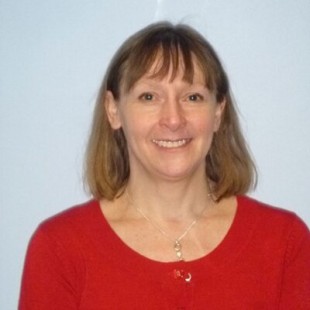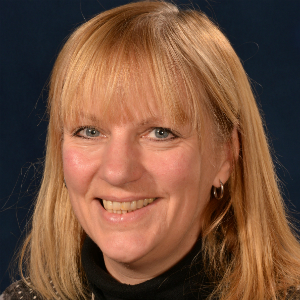
 Every year, one million children under the age of 18 are taken to accident and emergency (A&E) units after being involved in accidents in the home. Many more are treated at home or by their GP. Many of the accidents that happen in and around the home can be avoided.
Every year, one million children under the age of 18 are taken to accident and emergency (A&E) units after being involved in accidents in the home. Many more are treated at home or by their GP. Many of the accidents that happen in and around the home can be avoided.
Unintentional injuries are the major cause of morbidity and premature mortality for children and young people. There is a strong link between unintentional injury and inequality, with children from the most disadvantaged families far more likely to be killed or seriously injured. Additional death rates for injury and poisoning have fallen for all social groups except the poorest: these children are 13 times more likely to die. The average number of visits to the GP each year by pre-school children is 6; during school age this falls to 2–3.
In addition, illness (not medical or dental appointments) accounted for 58.3 per cent of all school absences. Managing minor illness and reducing accidents throughout childhood can be difficult and tricky to manage given the plethora of information and advice. Health visitors and school nurses as public health nurses have a vital role in supporting children, young people and families.
Under 5’s
As part of our series Early Years High Impact Areas for health visitors, we developed an area specifically on Managing Minor Illness and Reducing Accidents which provides the recommended areas for action to bring about improved outcomes.
- Illness such as gastroenteritis and upper respiratory tract infections, along with injuries caused by accidents in the home, are among the leading causes of attendances at Accident & Emergency and hospitalisation amongst the under 5s.
- Dental caries is the most common reason for children being admitted to hospital and entirely preventable. Removal of teeth is the highest cause of anaesthesia in under 5s.
- Around 1 in 11 children utilise hospital outpatients and 1 in 10–15 are admitted overall. Around half of under 1 year olds visit an Accident & Emergency department, leading to 1 in 3 being admitted.
School-aged children
Children and young people over the age of four are more likely to have an accident on the roads, with boys are more at risk than girls.
Between 2008 and 2012, across England, there were 2,316 deaths and 35,783 serious injuries recorded by the police among road users under the age of 25 years
- Travelling to and from school is an area where safety can be improved, with the largest numbers of child injuries of those aged between 5 and 10yrs occurring between 8am to 9am and 3pm to 7pm. During these times there are around 16 deaths or serious injuries to children under 16 years every week.
- There are also significant social inequalities in how traffic injuries are distributed through society and these are very significant among school age child pedestrians.
- Among pedestrians in the 5 to 9 years age group, the rate of fatal and serious injuries to children living in the 20% most deprived areas is nine times higher than to children in the 20% least deprived
- Among 10 to 14 year old pedestrians, there was a 3.7 time greater rate.
- There are also inequalities among school age cyclists. Among those aged 10 to 14 years there were 4 fatal or serious injuries per 100,000 people in the least deprived 20% of areas.
Reducing Unintentional Injuries on the Roads among Children and Young People under 25 years, sets out three key actions needed to have an important impact in reducing injuries and deaths;
- Improve safety for children travelling to and from school
- Introduce 20mph limits in priority areas as part of a safe system approach to road safety
- Action to prevent traffic injury and improve health must be co-ordinated
For older teenagers there are some groups who are at greater risk of injury. For example:
- males are at greater risk of being killed in traffic; more than three male children or young people die on the road for every female child or young person who dies
- the highest rates of both hospital admissions and police-reported serious and fatal casualties result immediately after young people can start legally using cars and motorcycles. In 2012, one in every 1,250 young people aged between 15 and 24 years suffered a serious or fatal traffic injury
- half of all young car occupant deaths occur between 8pm and 4am
Taking action
Health visitors and school nurses are a trusted source of knowledge, advice and information for parents. Health visitors have a primary prevention role for example in safety in the home and promoting immunisation to protect against illnesses of childhood. Likewise school nurses have an active role in safety and protection, with support being providing both in and out of school settings.
Both professional groups also have important an role in building parents confidence in how to manage minor illness and may be first point of contact for parents who are unsure on the best course of action when their child is unwell. As such they play an important role in the primary care team and can help reduce the number of times parents access GP surgeries and A&E departments for problems that can be dealt with elsewhere.
Strong local partnerships, consisting of communities, fire and rescue, police, businesses, schools, and health services, are essential for the effective planning and evaluation of road safety activities and school nurses and health visitors are particularly well placed to provide advice to communities and families and children.
The health visitor and school nurse input is thus at all levels of the health and school nurse model:
Your Community (Wider determinants) – Safe spaces, equipment schemes, working with early years and education settings on safe play campaigns, road safety and promoting immunisation
- Health visitors and school nurses work with early years and education settings to ensure that safety messages are promoted across early years and education settings and are consistent, tailored to the needs of the local population eg ethnic minority families, young parents etc. They have a primary and secondary prevention role.
- For younger children, health visitors have a crucial role promotion of breastfeeding, bottle hygiene awareness, immunisations, supporting parents to give up smoking and messages such as “Choose Well”, “Smoke Free Environment” can reduce attendances at A&E and subsequent hospital admissions.
- For older children, school nurses need to work with key partners to provide advice regarding road safety, accident prevention and managing minor illnesses to reduce avoidable school absences and A&E attendances.
- Health visitors and school nurses also make links and work with the Local Authority and multi-agencies on wider determinants of health, such as housing, health and safety. Development of local pathways to provide cares out of hospital or at home are effective in reducing hospital admissions. Health visitors and school nurses have an important role to play in primary and secondary prevention as an integral part of these pathways.
Universal - Prevention
- Health visitors and school nurses are in a strong position to raise parental awareness of the biggest risks and to provide clear, practical and accurate safety advice. As well as raising safety issues with parents at universal contacts, such as the child development checks, and during targeted follow-up after A&E attendances, health visitors can provide a highly effective ‘drip-feed’ of safety advice to parents attending child health clinics, baby clubs and other activities.
Universal Plus – When children are ill
- Health visitors and school nurses are able to provide help and support to new parents on a range of common minor childhood illness such as fever, cough and colds, vomiting and diarrhoea, building parental confidence and knowledge on self-management and when to seek help.
- Both professional groups provide advice and guidance on the signs and symptoms and management of more serious diseases such as meningitis, bronchiolitis and chicken pox, both to families and in settings such as early years and education settings in the event of local disease outbreaks and often are prescribers and can support in management of diabetes, epilepsy, skin conditions and asthma, stabilising symptoms through the correct use of medication.
Universal Partnership Plus – When children have a disability or long term condition
- Health visitors and school nurses ensure that children receive the primary prevention as set out in the HCP
- They work with other healthcare practitioners and early years services to support parents and children to exercise their ‘right to a childhood’ and in coping with additional needs if children are unwell
Additionally there is a range of underpinning actions in this area. HVs as local leaders and HV managers need to have understanding of these and to contribute and take action where appropriate. These include
Professional/Partnership Mobilisation
- Multi-agency training to identify common themes and advice on appropriate accident prevention
- Continued multi-agency safeguarding training
- Effective delivery of universal prevention and early intervention programmes
- Improved understanding of the Joint Strategic Needs Assessment and Health and Wellbeing Board information
- Integrated working of health visiting and school nursing services within existing Local Authority arrangements to improve services for children, parents and families through a holistic approach
- Identification of skills and competence to inform integrated working and skill mix
- Health visitors and school nurses to be aware of how the Child Protection Information System works (due to go live 2015) in hospitals
- Understanding barriers to primary care access
Resources and links:
https://www.gov.uk/government/uploads/system/uploads/attachment_data/file/295132/SFR09_2014_Text.pdf
http://oakwoodlive.net/information/healthandsafety/NHS%20Illnesses%20Leaflet.pdf
http://www.bridgewater.nhs.uk/ashtonleighwigan/minorillnessserviceforchildren/
http://www.eastcheshire.nhs.uk/Patients-Visitors/Childrens-leaflets.htm
Wendy Nicholson is the Professional Officer for School and Community Nursing at the Department of Health.
Pauline Watts is the Professional Officer for Health Visiting at the Department of Health
